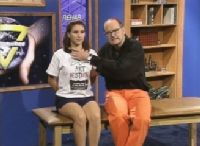

$74.00
This seminar provides a broad introduction to the concepts of mobilization of the nervous system.
Description
This seminar provides a broad introduction to the concepts of mobilization of the nervous system. The nervous system is presented as a mobile and elastic structure worthy of physical examination in many spinal and peripheral problems. To integrate this concept into clinical practice and research, some clinical reasoning skills and a basic understanding of neurobiology are necessary. Therefore, this seminar merges three areas:
- Physical examination of the nervous system
- Neurobiology of peripheral and central sensitivity
- Clinical reasoning science
Course Details
| Instructor(s) | |
|---|---|
| Course Length | |
| Platform |
Details
Run Time: 4 hours
Attendee: Physical Therapists, PTA’s, Students, Athletic Trainers
Required Equipment: Personal Computer, Tablet, or Smartphone with access to Broadband Internet (<1.4 mbps)
Examination: Two (2) 20-question module Quizzes. Passing grade of 70% or higher on each required for certificate
Course Evaluation: Yes
Certificate of Completion: Yes
Workbook/Handout: Yes
Course Approvals/Certifications:
Outline
Module I
Lecture 1: Physical Health of the Nervous System
Unit 1: Definition & Manual Therapy
Unit 2: Key Points
Lecture 2: Pain
Unit 1: Introduction & Definition
Unit 2: Language of Pain & the Pain Revolution
Lecture 3: Pain, Clinical Reasoning, & Neurodynamics
Unit 1: Clinical Reasoning
Unit 2: Pathobiological Mechanisms, Dysfunctions, & Sources
Unit 3: Contributing Factors, Precautions, Prognosis, & Treatment
Lecture 4: Peripheral Neurogenic Sensitivity
Unit 1: Injury to Nerves / Altered Fluid Movements
Unit 2: Where Does Pain Come From?
Unit 3: Clinical Detection
Module II
Lecture 5: Central Sensitivity
Unit 1: Dorsal Horn
Unit 2: Mechanism of Dorsal Horn Changes
Unit 3: Patterns of Maladaptive Central Sensitivity
Lecture 6: Physical Examination of the Nervous System
Unit 1: Base Neurodynamic Tests
Unit 2: Straight Leg Raise Test
Unit 3: Other Neurodynamic Base Tests
Lecture 7: Management Guidelines
Unit 1: General Points
Unit 2: General Points – Part II
Unit 3: Patient Examples – Part I
Unit 4: Patient Examples – Part II
Unit 5: Patient Examples – Part III
Unit 6: Seminar Summary
Final Test
Certificate of Completion
Course Evaluation
Learning
Upon completion of this class, participants should be able to:
- Describe the functional anatomy of the nervous system to its mechanics
- Examine the physical health of the nervous system by conducting tests, nerve palpation, and neurodynamic tests
- Describe the neurobiology, pathobiology, and clinical patterns related to peripheral and central sensitivity.
- Discuss methods of examination and management of neuro-orthopedic disorders
- Discuss the intimate links between neurobiology, clinical reasoning, and physical examination

